What hides behind the word “storytelling”
Storytelling is the art of telling a story in order to convey a information or a concept. It is very frequently used by companies to tell their stories, commitments or objectives in a personal and emotional way. In fact, since childhood, we like to be told stories because they appeal to our curiosity and emotions. To tell a story in your e-Learning courses, it’s the same thing! Learners must be involved in the development of the scenario and feel emotions to be involved in the simulation. Great storytelling has to respect certain rules to be successful and that is why we will present tips on how to tell your story for e-Learning scenarios. To better understand the different steps, we will give you a concrete example for each one.
Here is the interactive scenario we will use to highlight our points: “Practice welcoming a client who has an issue with they polo shirt. Then meet the customer before they exit of the store to listen to their impressions.”
Create a story and relevant characters!
Your story is important because it will keep the learner involved. Therefore, when creating the story, you must integrate your pedagogical message, objectives and key points. So before you start, you must define a common thread and the key moments of the scenario that the learners will have to go through to reach the objectives. In addition, as in any story, you need relevant characters. It is your characters who will lead the story from beginning to end through key moments. The choice of your characters must be consistent with the story and they must have the right physical appearance (for example, hair tied back for a surgeon ready to operate).
The characters of our simulation: a polo shop clerk and a customer who wants to return her purchase.
The story: The customer comes to return her polo shirt that has shrunk in the washing machine even though she had followed the salesperson’s advice.
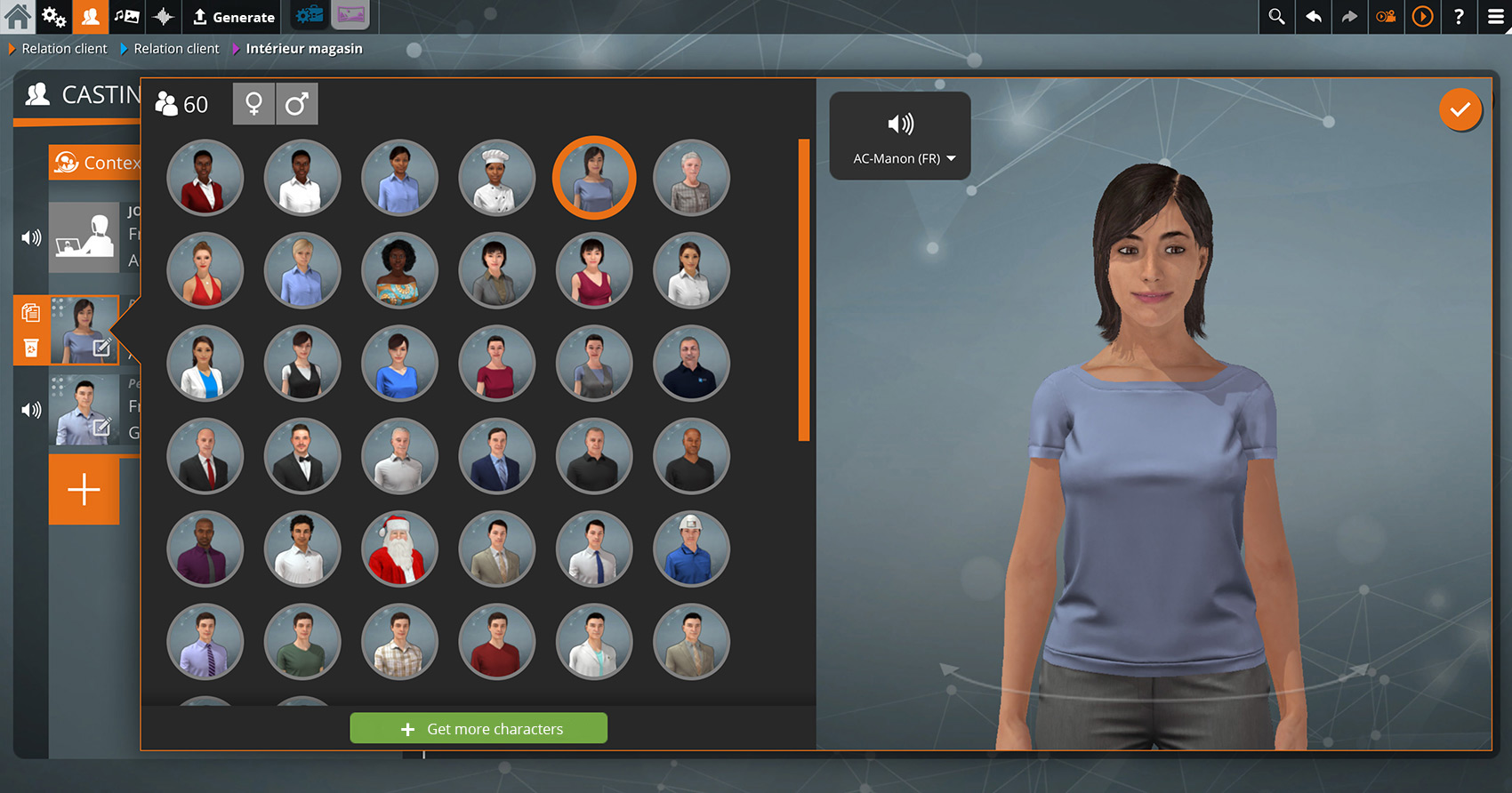
Remember to include the main narrative elements
Your script should have a consistent beginning and end, an incident marking the beginning of the “plot”, and key moments. The key moments of the scenario are the passages where the learner’s response will be critical to how the scenario unfolds. Your scenario should follow a common thread throughout the story to keep learners involved and to make the simulation a truly effective learning tool. The structure of the story must therefore be well defined before you start creating the sequel.
Key moments of our scenario: The client is disappointed that she is not able to wear this polo shirt to her tennis tournament this weekend. The salesperson has several choices of answers including “ha do you play tennis?” then “what is your level? ». This moment is decisive because it will allow the customer to feel listened to and have a real conversion and will then be more open to proposals.
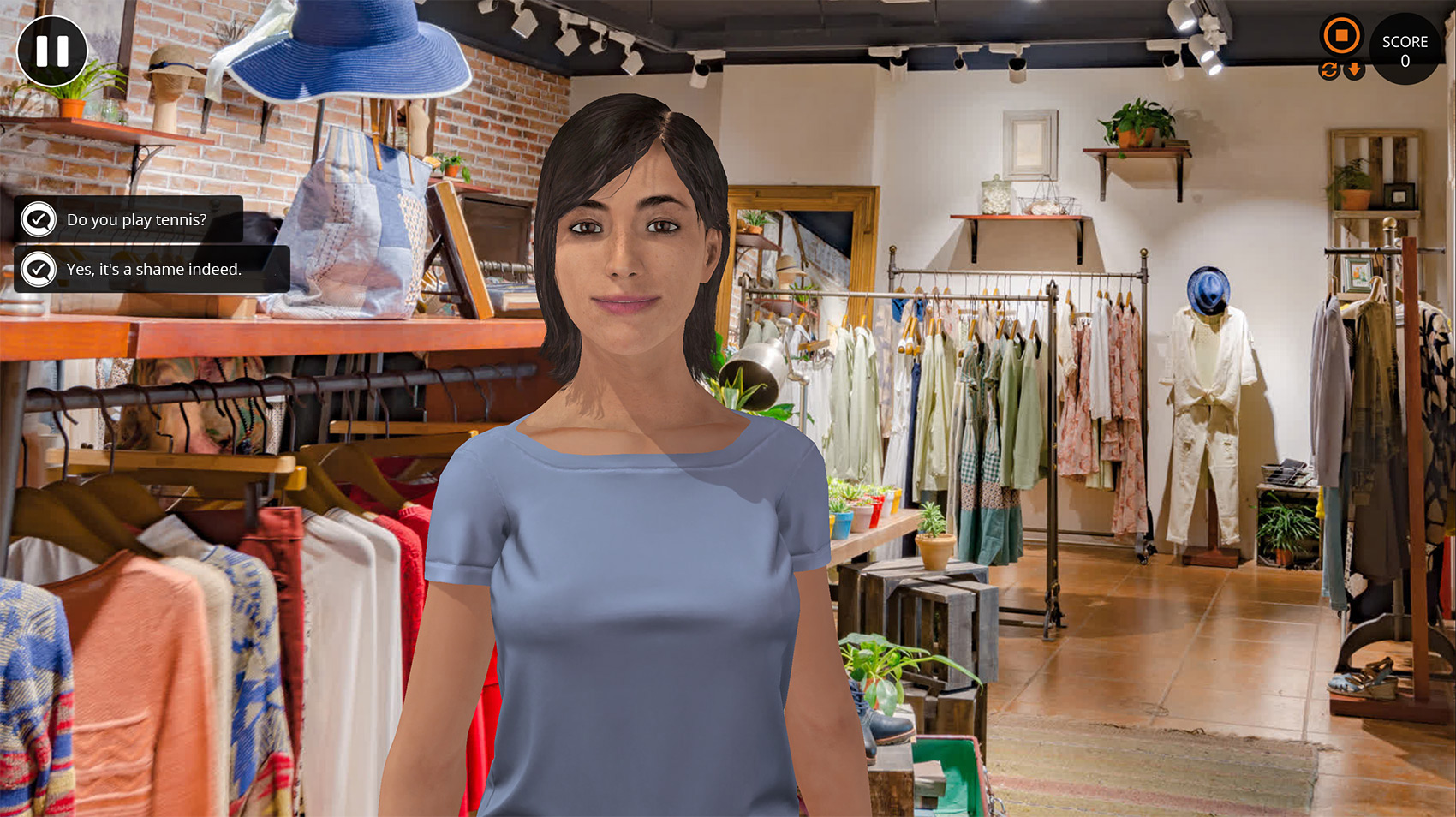
Use good quality graphics for a better immersion
For better immersion during the simulation, decent quality graphic environment is essential. It allows the learner to really feel in a real situation and to play the simulation as a real case study. The setting is also very important since the environment can represent the learner’s workplace or illustrate a specific case (job interview…) The use of 3D characters makes it easier to put oneself in a situation and to be able to better react to a real similar case. By configuring the characters and sets, you will create a more real immersion.
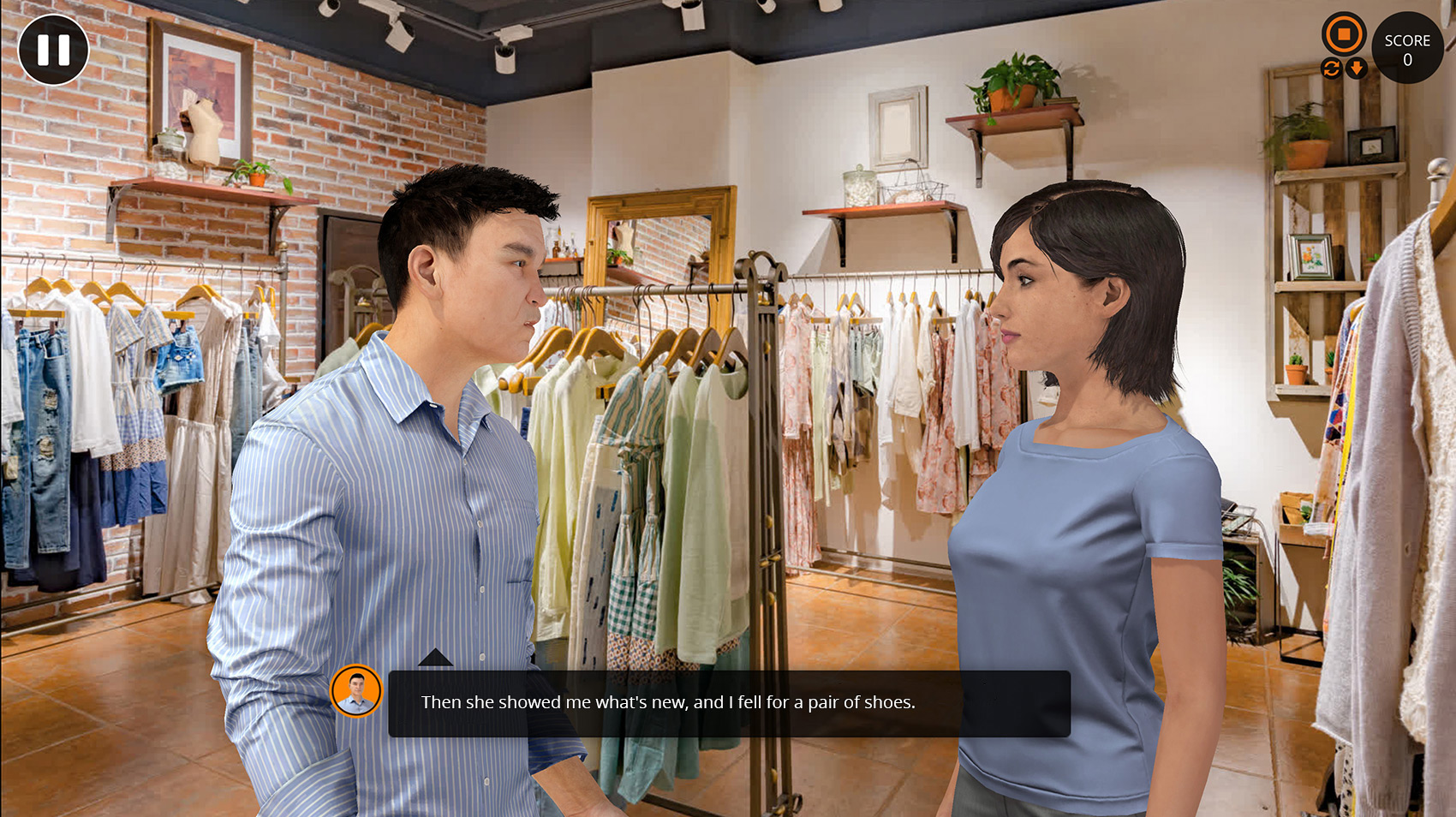
Integrate the main pedagogical message into the plot
Your story must serve the main message you want to deliver. The plot must indeed contain some key points that remind you of this message even if you can be creative in your narration. When choosing settings, characters and conversations, you should keep this educational message in mind. The better the message fits into the plot and story, the more likely you are to reach your learners and ensure retention.
Instructional message: When the salesperson begins to take an interest in the customer’s life, it begins to be more open and enjoyable. And during the debriefing, the customer says she is happy that the salesperson is interested in her and also that she has received an apology. The pedagogical message of this scene is to show interest in the customer’s problem and of course to apologize for the inconvenience caused.
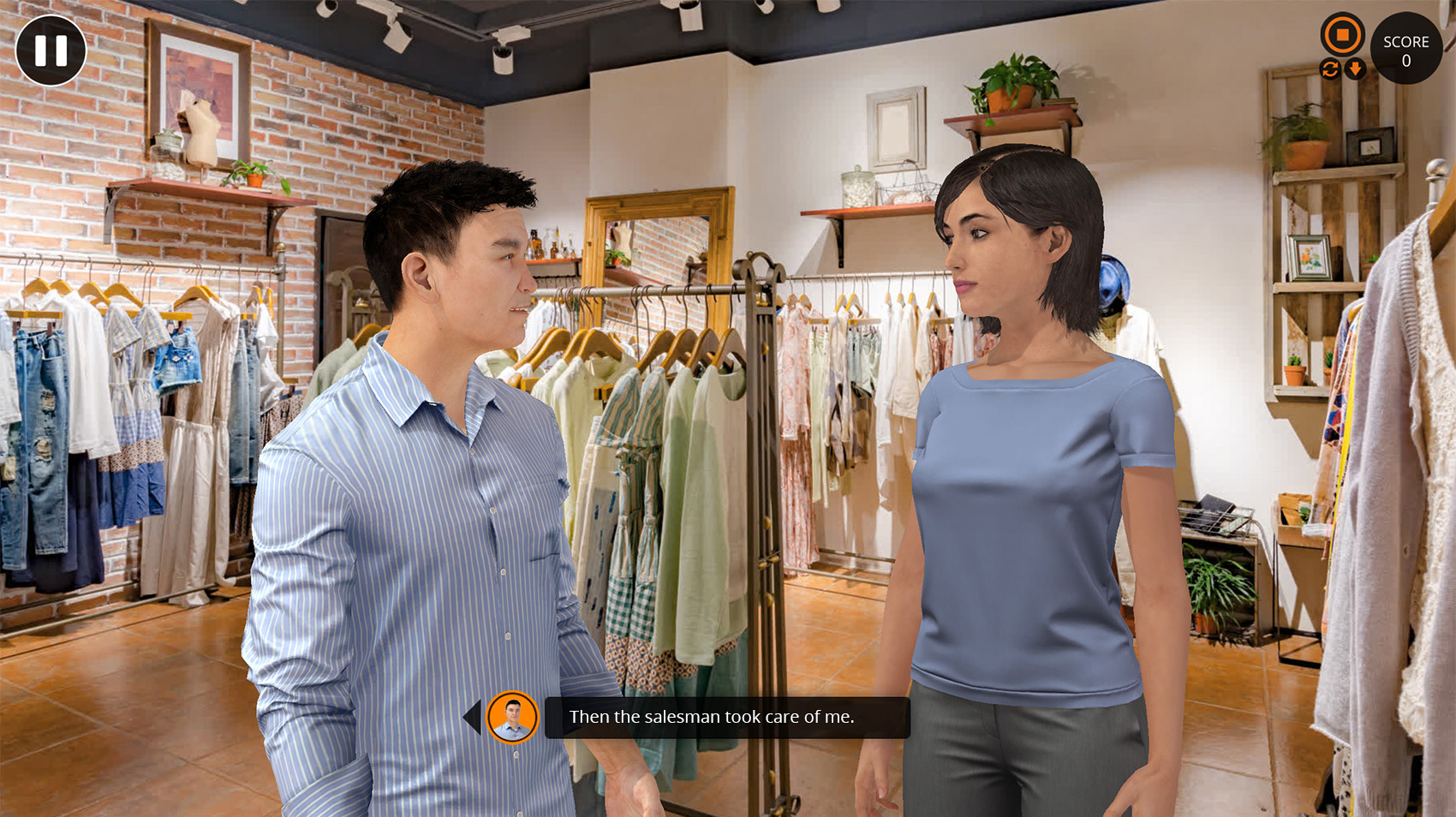
Use a narrative tone
If you use a narrator, make sure that he or she simply remains the learner’s guide and does not become the main character of the story in your simulator. A narrator must have a clear and precise speech, and must not distract the learner from their training. As for the tone used in the script, you may choose to place a few humorous notes in your speeches to impress the learner and keep him/her involved. However, be careful not to diverge too much from your teaching goal. To create quality conversations, try to draw on your own experiences and the situations you’ve already found yourself in to give an authentic side to your story.
Narrative tone in our scenario: In this scenario, the tennis topic is a way of delivering a pedagogical message, but the form gives a nice side to the discussion.
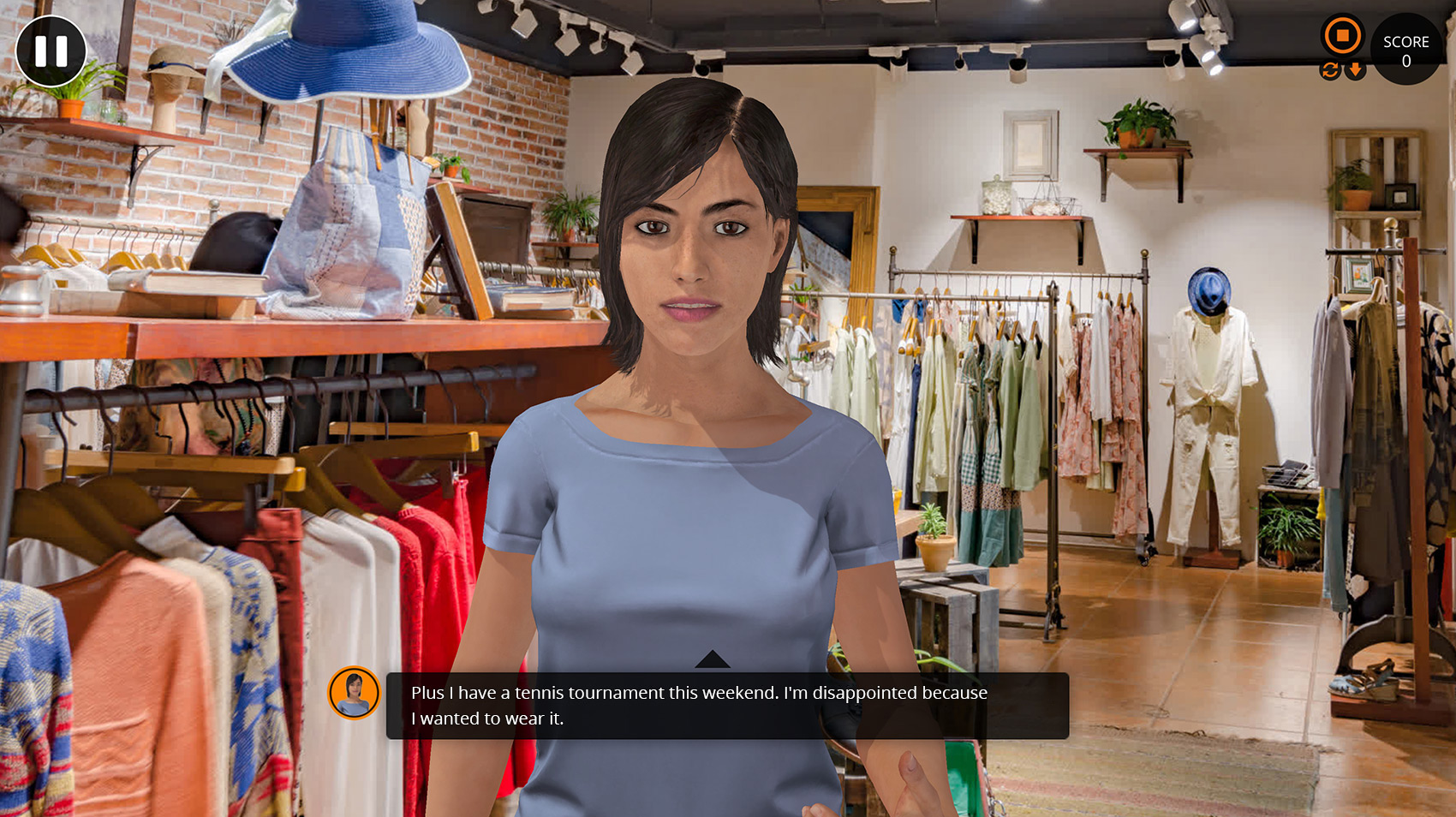
Be brief to avoid unnecessary information
Your narration should be interesting but not too complicated. Avoid cognitive overload by delivering important information bit by bit. You can set the length of the scenes according to the amount of important information. It is important to strike a balance between interesting and essential content. At the end of an e-Learning training simulation, the learner should be able to quote the important information he has learned. To be sure of the sequence, play your scenario several times to see how fluid your conversations are.
Example: The subject of tennis is touched on quickly, it helps to make the customer more open, then the sales assistant can ask two questions about tennis but then has to return to the customer’s problem.
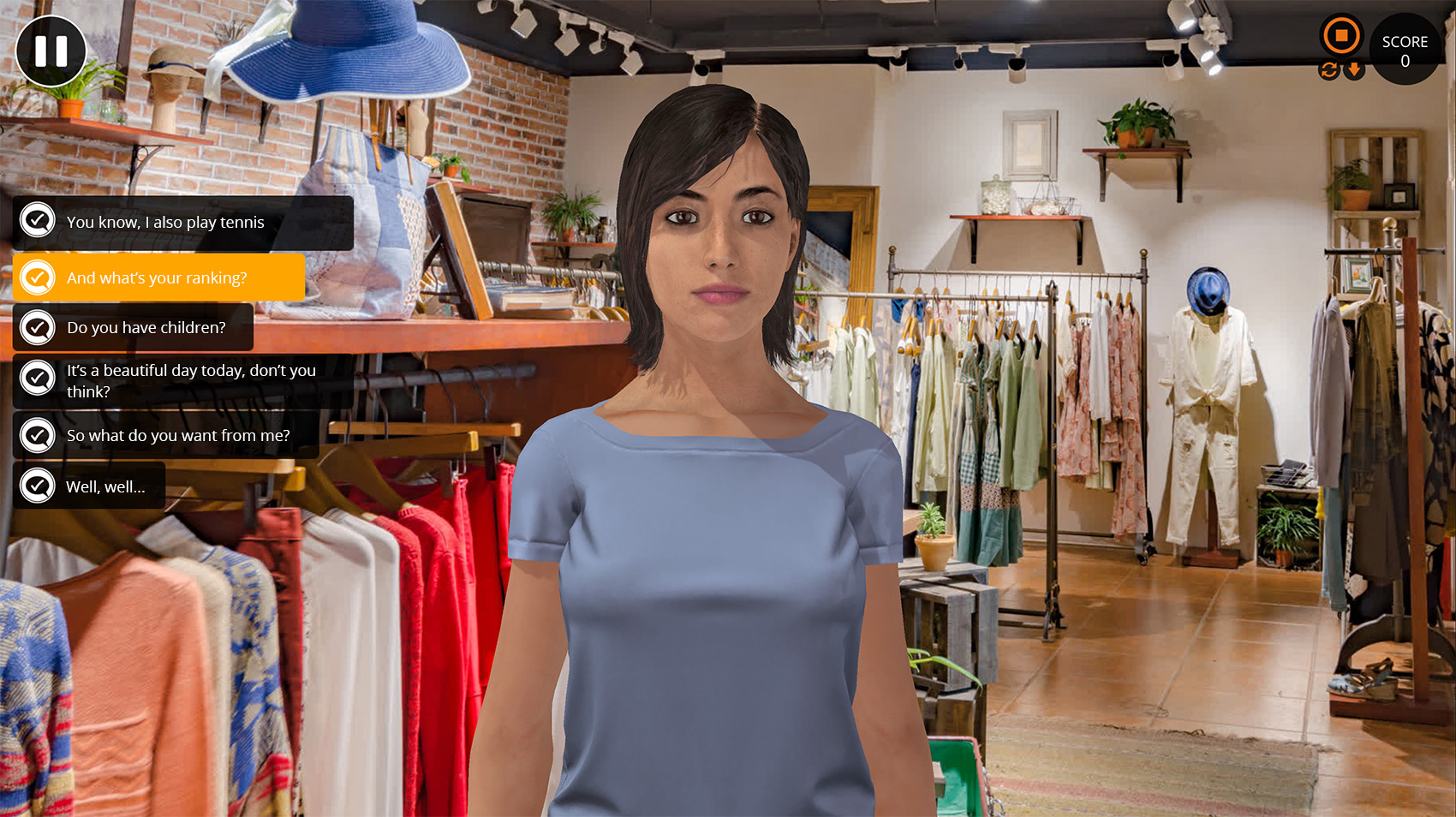
Make your storytelling interactive
Rather than integrating long paragraphs explaining a concept into your digital training, make your story interactive! Have a character explain them so that the learner can then ask questions or make decisions. In an interactive simulation, each choice leads to a different result and directly influences the course of the scenario. We can thus see the consequences of such choices and understand our mistakes.
Example: Throughout the simulation, you can choose between several choices of answers, so you are at the heart of the conversation.
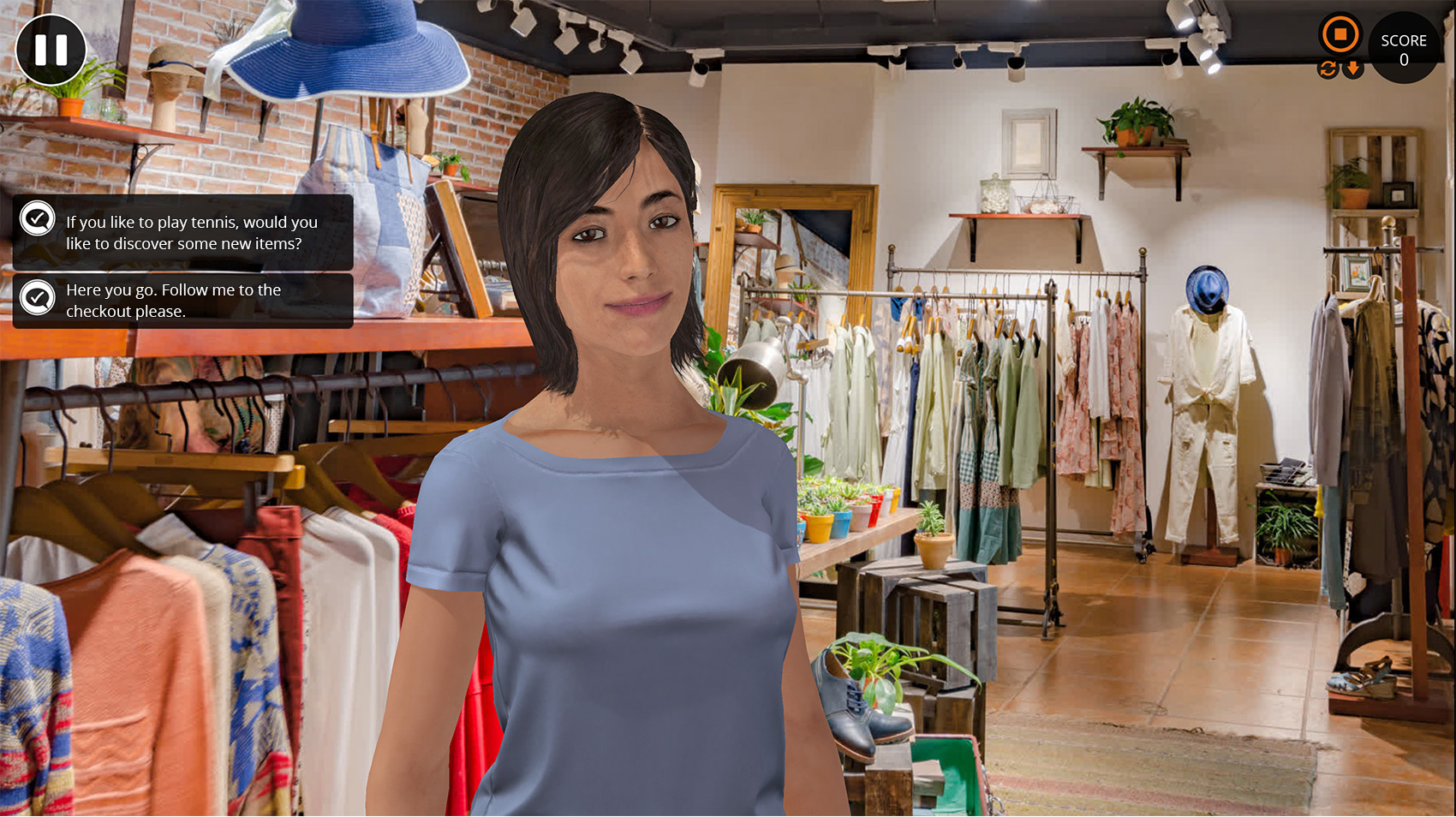
If you too believe storytelling is a crucial part when building an elearning course and wish to know more about it, you can attend the conference « The power of stories in learning » presented by Thomas Junod, Head of UEFA Academy. A showcase of their application « UEFA for players » designed by Serious Factory is on the menu so bring your own phone!
in case you are not attending Learning Technologies, you can also simply contact us or download the trial version of our authoring software VTS Editor!











